The Complete Guide to Traditional Thai Outfits
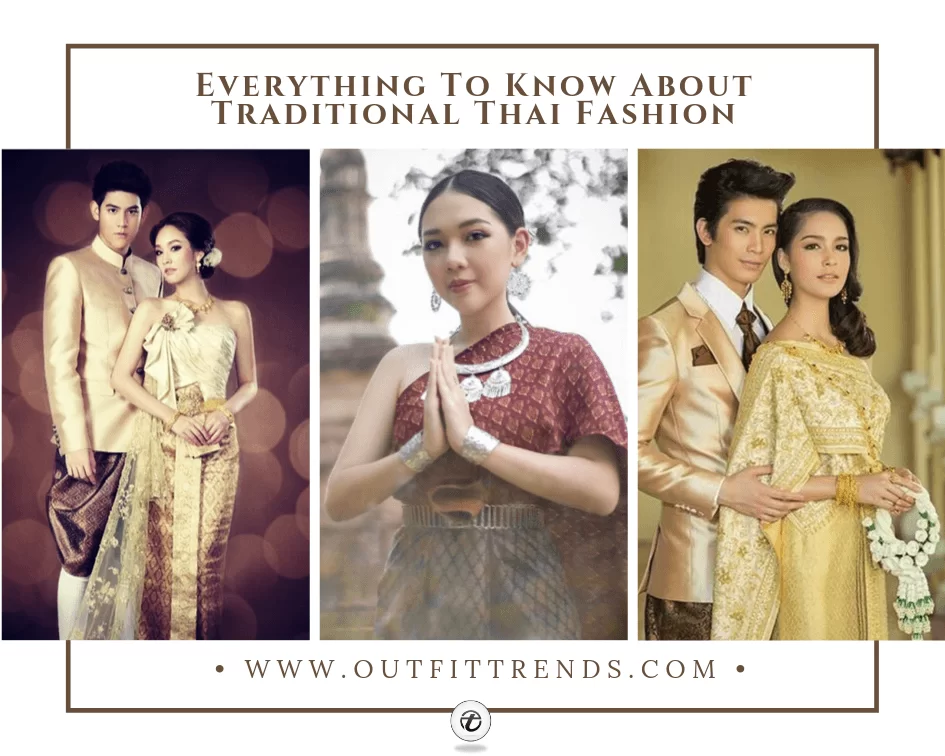
↓ 13 – Pha Nung
Also called Panang (or Panung) is one of the most common traditional outfits observed. It comprises a long strip of wide cloth that is wrapped around the person’s waist. This cloth reaches below your knees. It is bottom wear, usually paired with a Pah Hom. Sometimes, Pha Nung is passed between the legs and fastened at the back by tucking it in a way called ‘Chong graben’. This is done so that the cloth does not come in the way of walking. The Pha Nung is similar to Sampot, which is a traditional Cambodian garment. Sampot is worn the same way Pha Nung is. It is worn by both men and women. To be exact, the cloth draped around is almost 3 yards long on average. The Pha Nung is also displayed in the famous museum, The Metropolitan Museum of Art, credited to the Gift of James H. W. Thompson, in 1953. It was exhibited in 1972. You should also have a look at our earlier post on Traditional Korean Clothing.
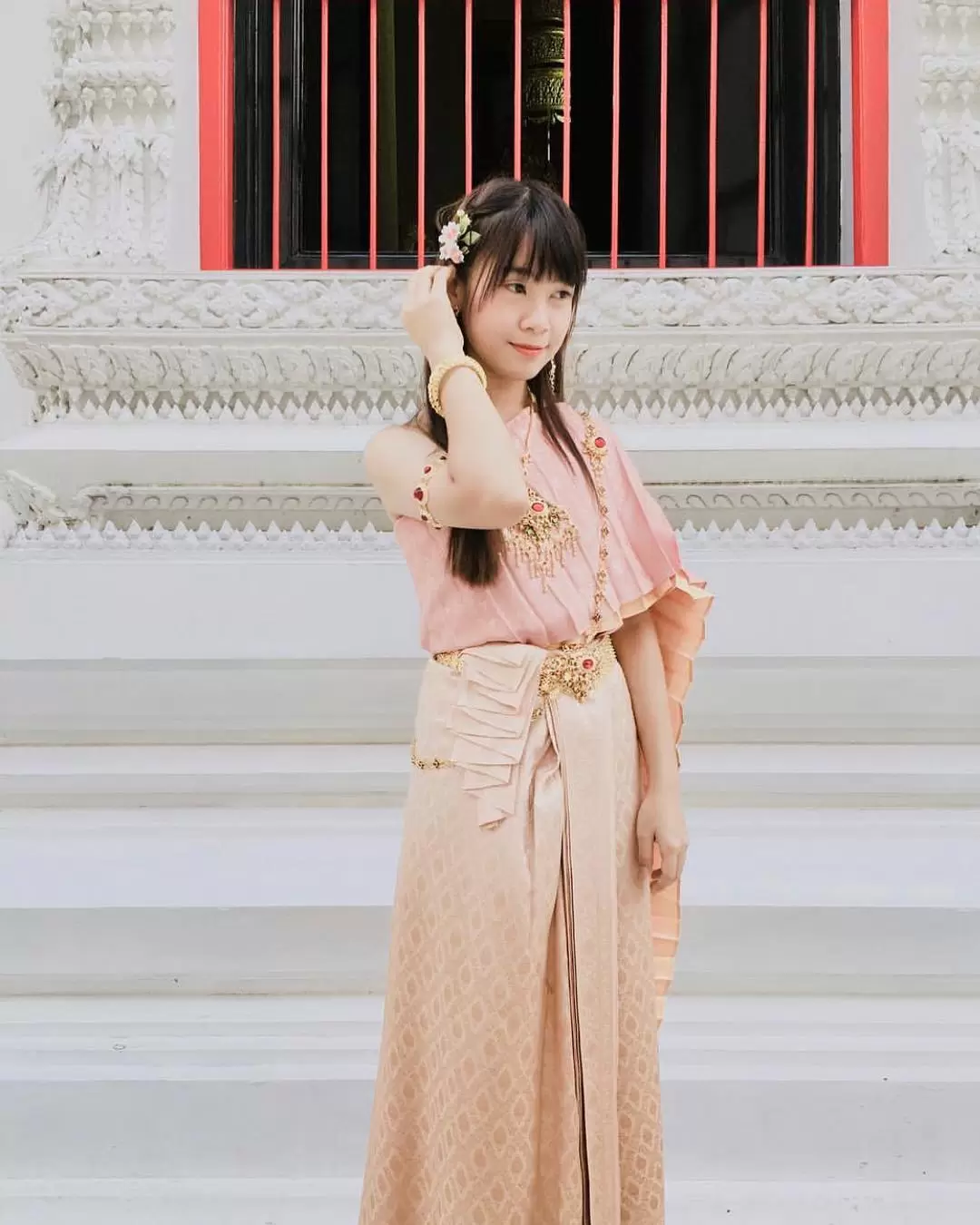
↓ 12 – Steps to wear a Pha Nung
Firstly you would need a sheet of cloth, almost 3 yards long. The width depends on you. The easiest rule is that it has to be at least as wide as your legs are and the length should be four to five times the width.
Having your friends help you dress up will be a preferable option since it gets hard to reach the back when tying the Pha Nung.
You should begin by tying the cloth around your waist. Make sure that it is the exact middle half of the sheet of cloth.
Then tie a knot joining both ends. Your clothes should be tight around the middle of your waist. Hold the top corners to prevent it from falling.
Now extend the ends from the knot and put them together, parallel and straight. Follow this step by folding the cloth together, little by little. To give a rough idea, each fold should be at least as wide as a hand. The folding should be in this pattern, first to the left, then right, then left, then right…and this goes on till you reach the bottom rim of the cloth.
Once you have reached the end, start folding the sheet flat and roll the folded end at least twice inwards. We would recommend either a helping hand of a friend or a secure needle to hold all these folds together.
All the folded parts of the sheet should be moved to the backside from between your legs, now.
On the back, drape the folding on each side. More the symmetrical, the better and neater it looks.
Secure the Pha Nung around the waist. You could use an elastic band or a girdle here.
And voila!
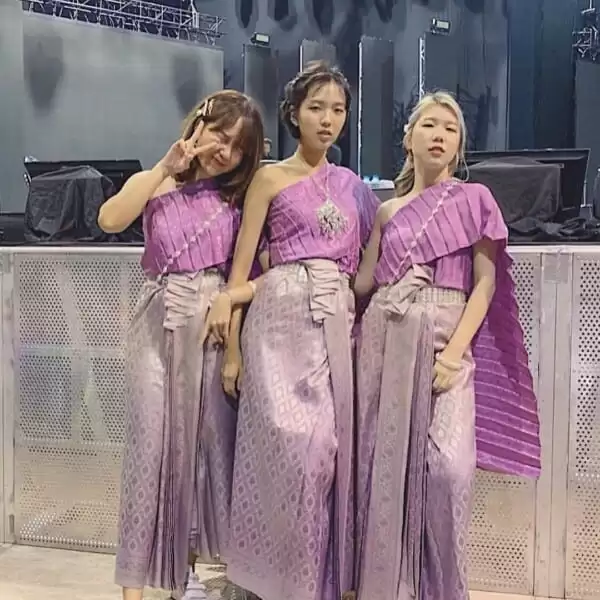
↓ 11 – History Behind Chang Kben
Chang Kben is the same as Pha Nung. Its history goes way back to Cambodia. There is a legend about this garment, narrated by Khmer elders. Their ancestors used Chang Kben, which was inspired by the Indian Dhoti. At that time, Hinduism was the most followed religion in India, with the Khmer Empire ruling over it. According to Ramayana mythology, Hanuman is considered a symbol of bravery, brilliance, and power. When wearing a Chang Kben, people give tribute to Hanuman, by dropping a tail at the back like Hanuman’s monkey tail. This fabric is also known to be worn not only by Thai but by Tamil people in South India, as well as Khmer people, till today.
During the mid-13th century, Thai people from the Sukhothai Kingdom and Lao people from Lan Xang adopted the Sampit Chang Kben for their festivals, auspicious occasions, and royal events. It became important for royal subjects and monarchs in their palaces.
Initially, Sampot Chang Kben was only for males. But more recently, women have adopted wearing it, too. It is especially popular for formal celebrations and events. Khmer brides and grooms are usually seen wearing in Sampot Chang Kben at their wedding.
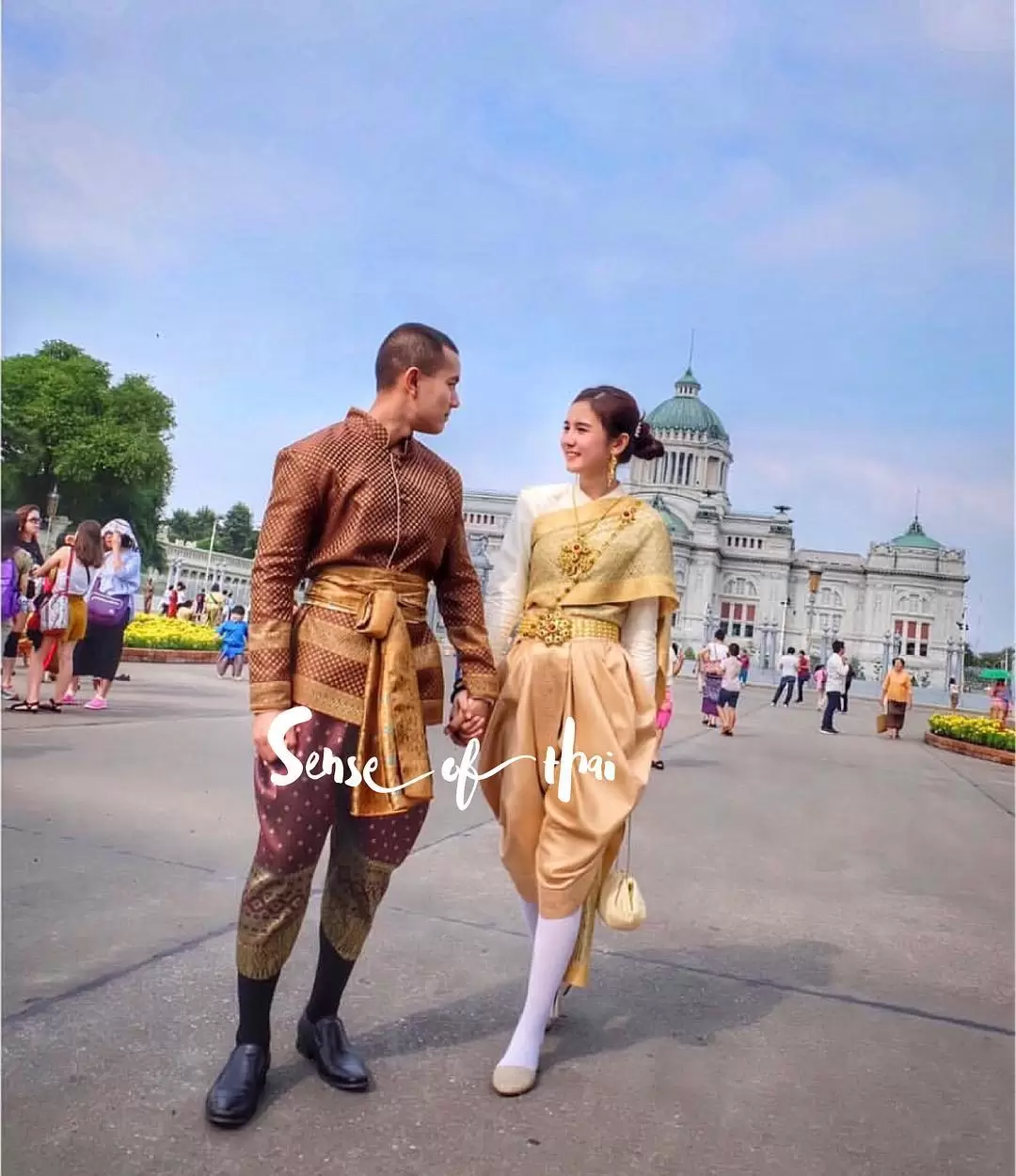
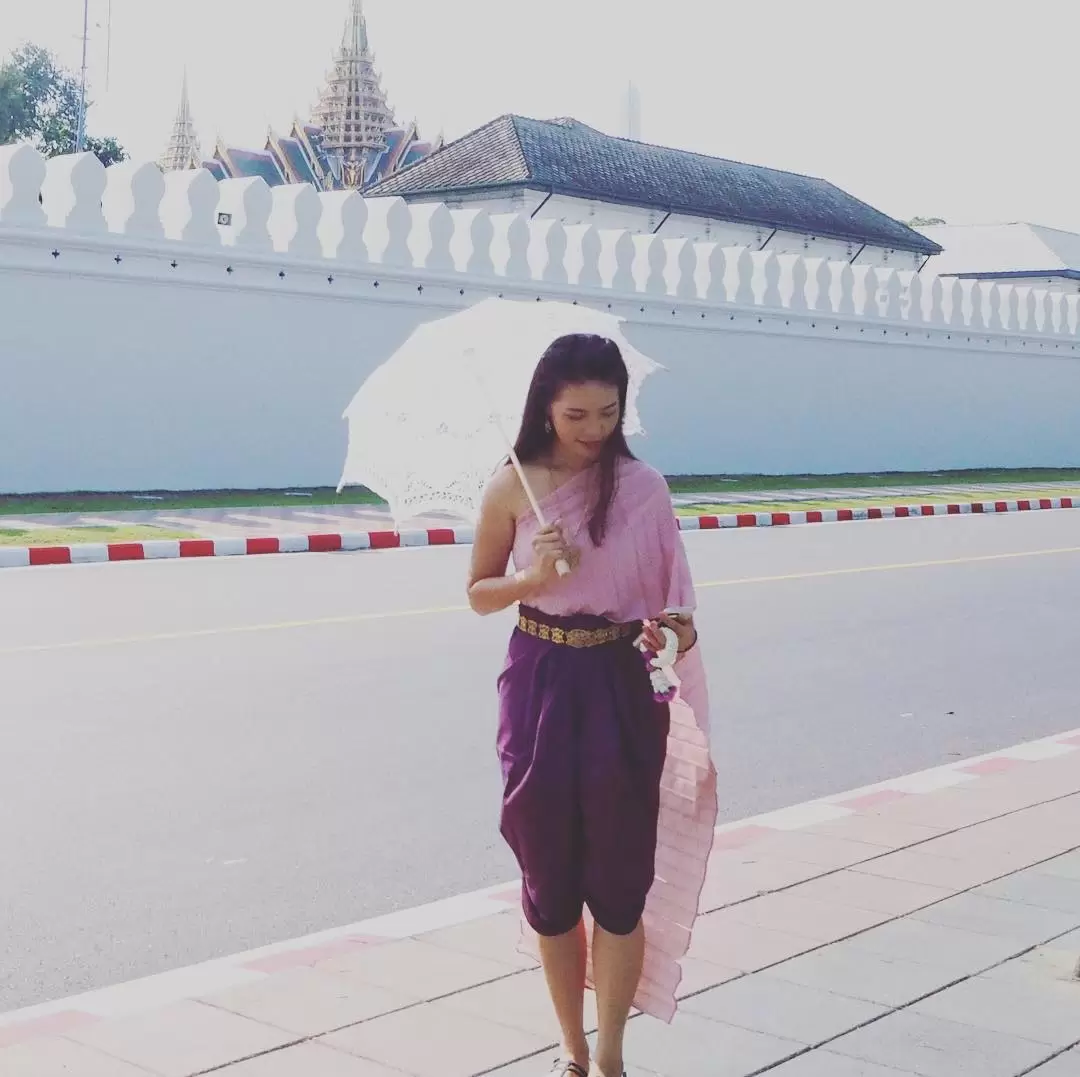
↓ 10 – Sabai
Sabai, also known as ‘phase biang’, is worn to cover the chest. It is similar to a shawl, except with a Southeast Asian touch to it. The word ‘Sabai’ literally refers to a woman’s silk breast cover in Thailand as well as other countries in Southeast Asia such as Cambodia. Sabai is not only worn by women, though. It is worn by men in Lao on religious occasions and weddings. These usually have checkered patterns. Sabai is typically one foot wide. It falls diagonally over one shoulder like a sash, whereas the other shoulder remains bare. The concept of Sabai was inspired by the Indian Sari, which also covers one shoulder. Though, a sari is worn with a blouse below. In the case of Sabai, the blouse is not so common.
The origin of the Sabai is thought of as being invented in the 1st century AD during the Funan era. The tale attached to it includes the founders of the Kingdom of Funan, Preah Thaong and Neang Neak. According to the legend, Preah Thong holds on to a piece of cloth worn on the Nagini during the journey to Naga’s kingdom. That piece of cloth is known as Sabai. In this tale, Sabi symbolizes the Naga princess’s tail. This inspired the wedding custom where the groom must cling to the bride’s Sabai as they enter their honeymoon room.
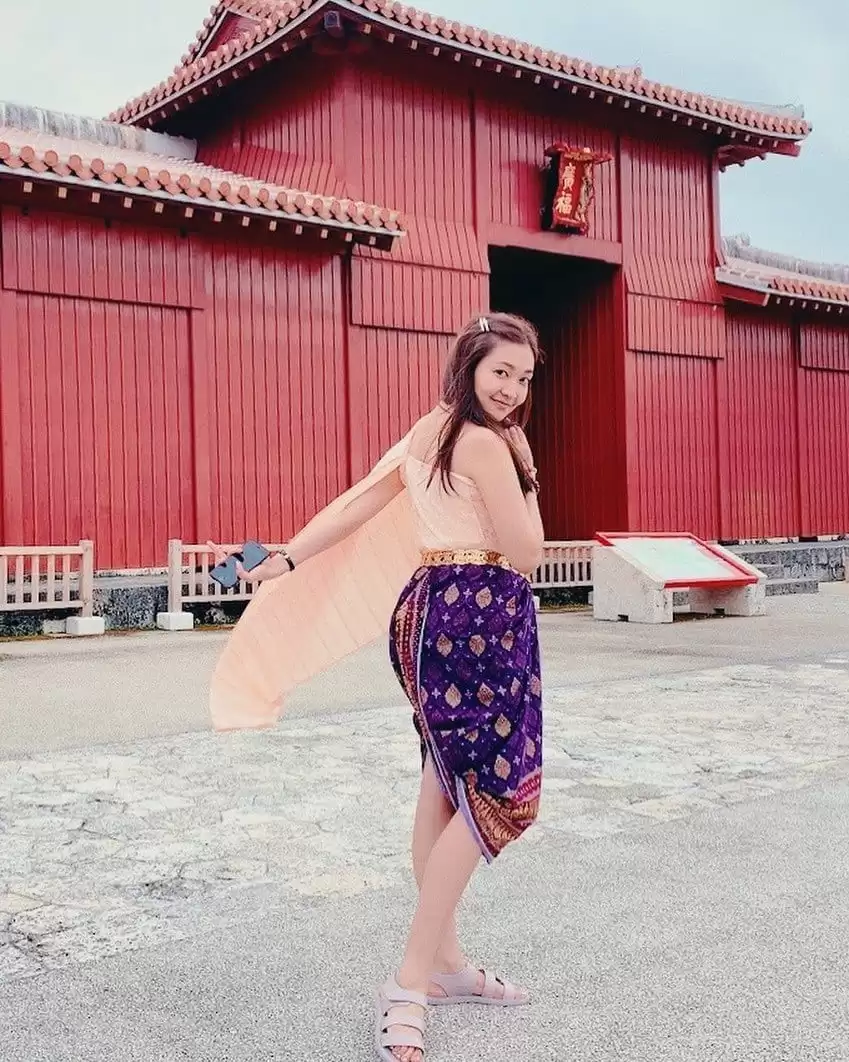
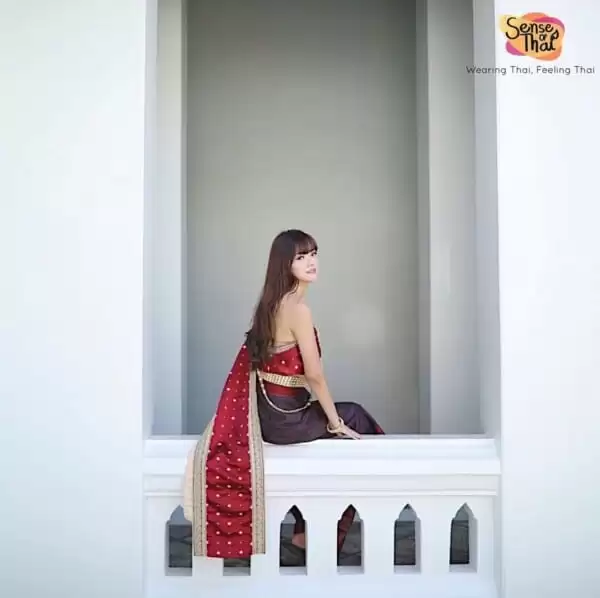
↓ 9 – Suea Pat
Suea means “shirt” while “Pai” means to wrap sideways or to smear”. In Thai culture, the suea pat is a long-sleeved shirt without buttons. It is worn by covering the right panel of the shirt over the left panel. These two panels are then fastened together with strings holding them together. Suea Pat traditionally has large gold-coloured collars. It is worn to weddings and other ceremonies by the females. It is more commonly seen in northern Thailand.
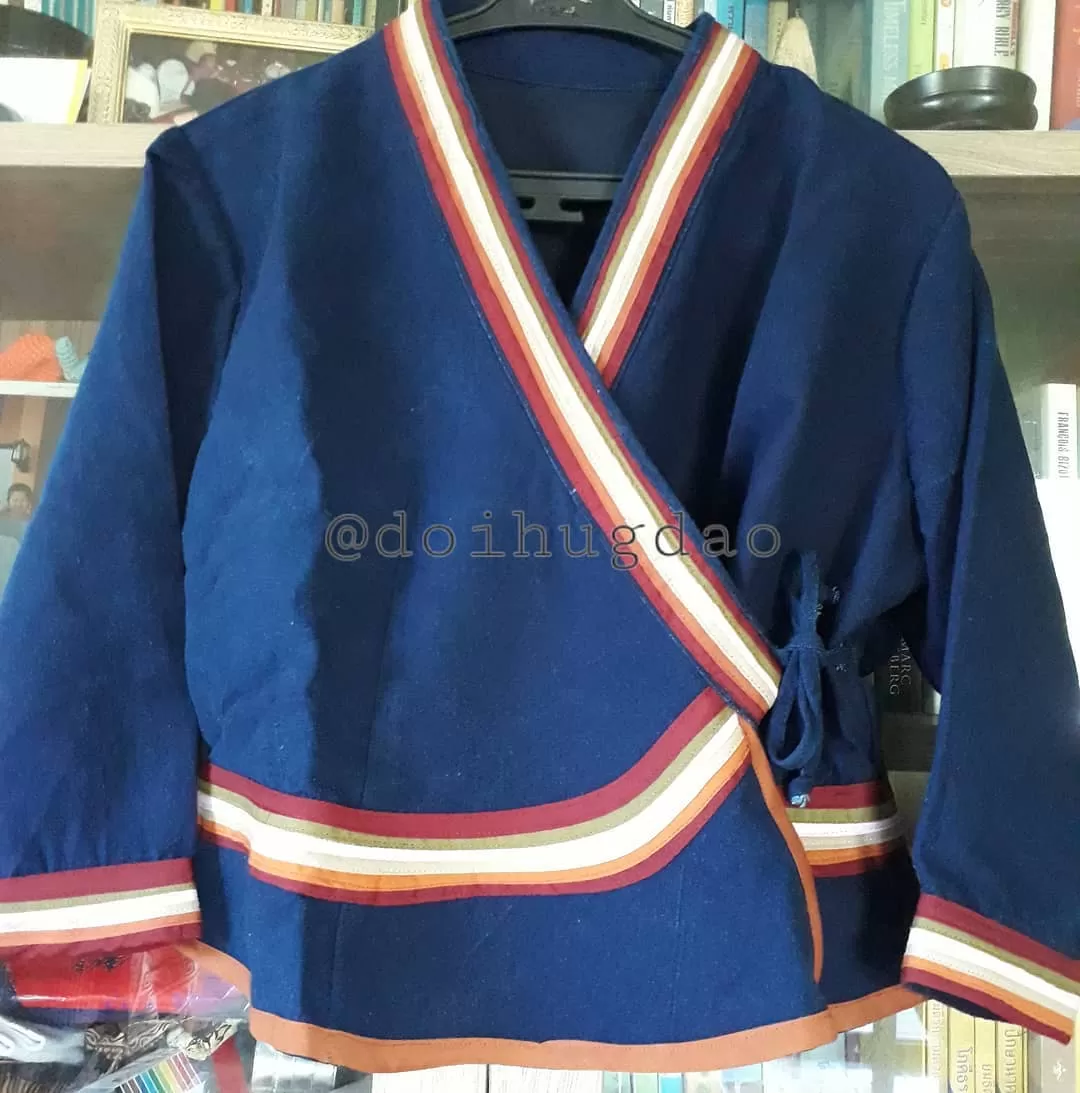
↓ 8 – Sinh
Sinh is most commonly observed in Nothern Thailand and Northeastern Thailand. It is a traditional garment worn by Thai women. Sinh looks like a tube skirt, made of silk. There are different styles to wear Sinh, and it depends on the region. This garment is more commonly worn in Lao, in daily life. In Thailand though, they are worn on special events only.
A sinh has three main components. The head of the sinh is called hua sinh. It is referred to as the waistband, which is tucked in and hidden to give a neat impression. The main part of the sinh is called ‘phuen sinh’. or ‘tua sinh’. It is mostly plain and simple, with no more than two colours. The tin sinh is the foot of the sinh, which means it is the hem. The hem is filled with woven details and designs with delicate embroidery. The woven sinh designs can give away which ethnic area is the sinh from.
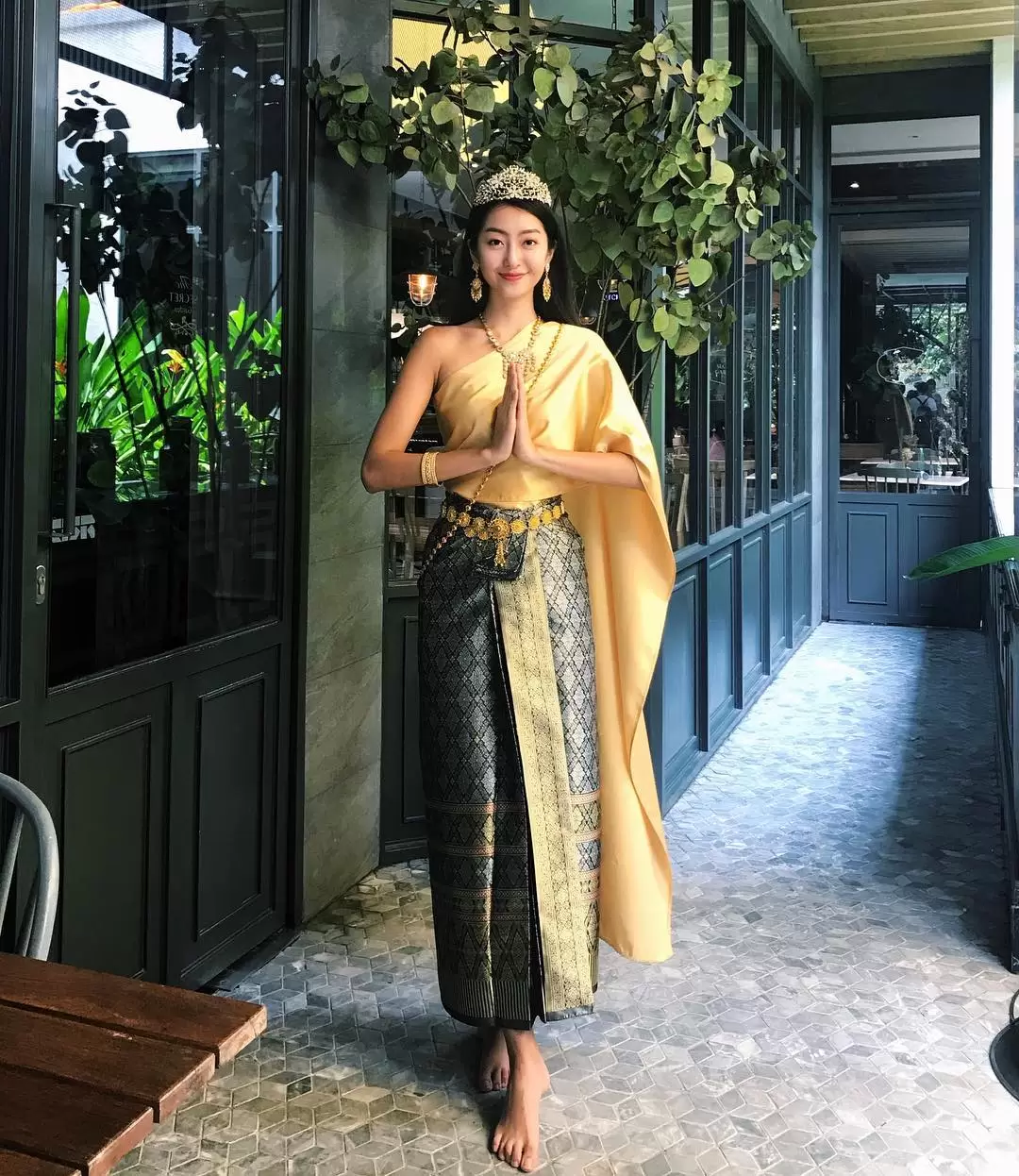
↓ 7 – Ratcha Pataen
Ratcha Pataen is more commonly known as the ‘Raj Pattern,’ meaning royal pattern. Compared to other traditional suits, this one is more recent. In 1871, King Chulalongkorn got this suit especially fashioned by a Calcutta tailor. This was during his visit to British India. The Raj Pattern is worn by Thai men. It consists of a jacket with a standing collar and a buttoned-down opening. The inspiration behind this ensemble is the Chong kraben and the Western suit jacket.
Today, the raj pattern is left to be worn on specific occasions. It has become the national costume of Thailand. The jacket is used in universities as part of the students’ uniforms. It is paired with straight trousers. It is also used as the dress uniform in civil and military service. You should also have a look at these Botswana Traditional Outfits For Women To Wear.
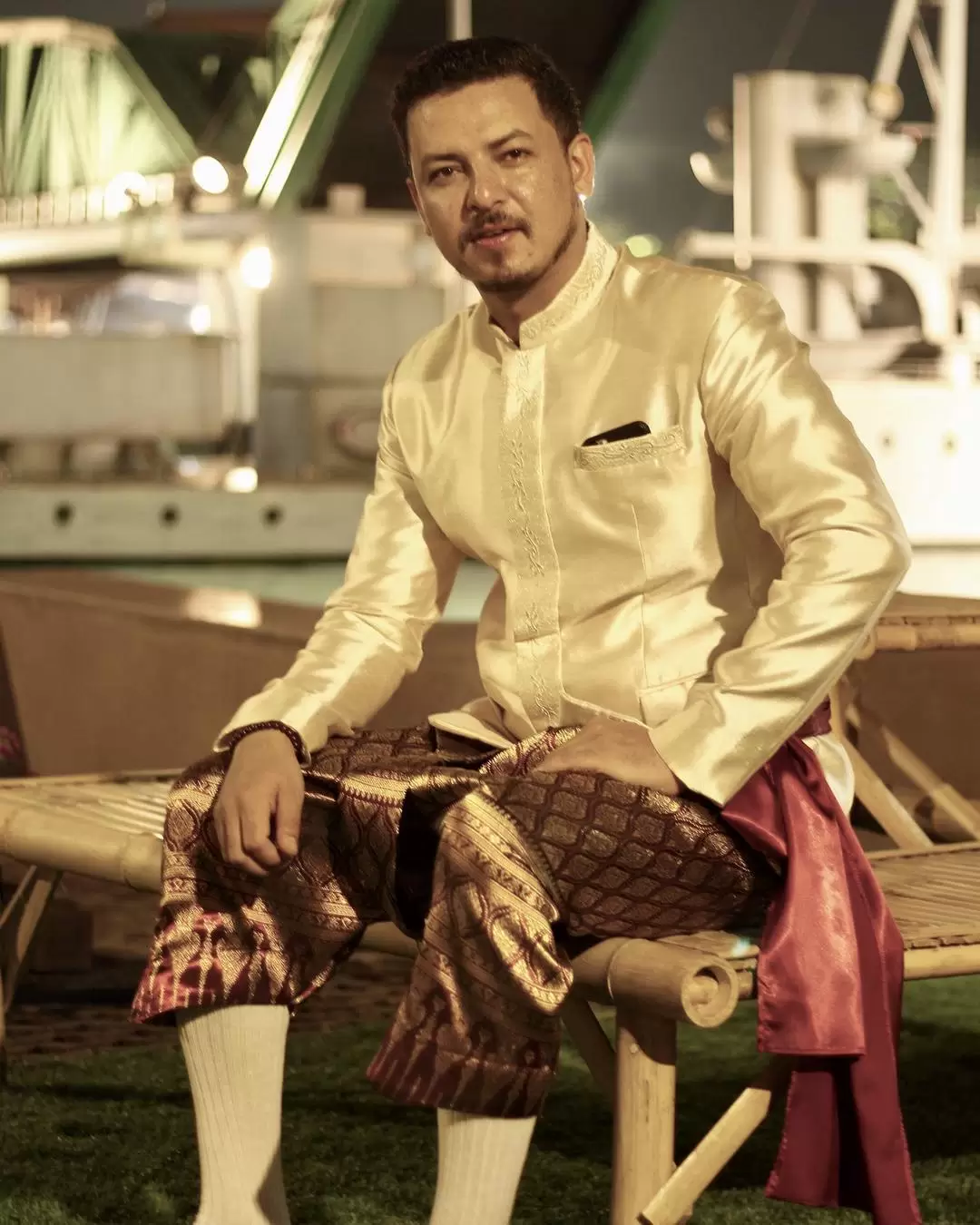
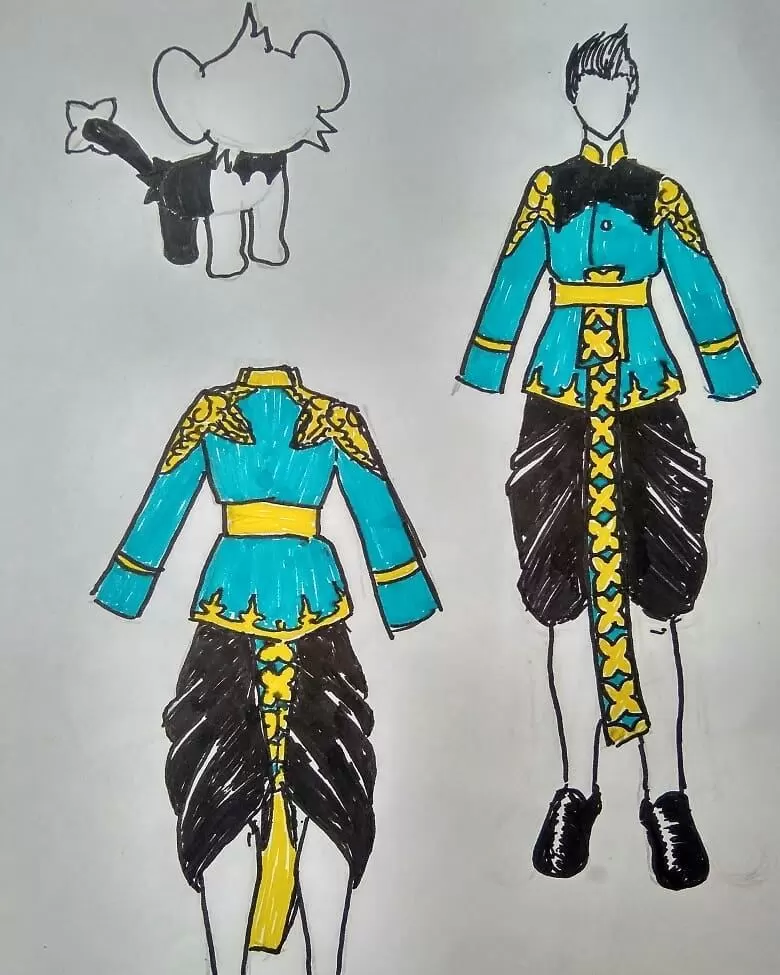
↓ 6 – Suea Phraratchathan
Suea Phraratchathan means a royally bestowed shirt, or in other words, men’s national costume. It was designed in 1979 and has been promoted by ministers and army staff since then. The outfit has become quite popular now, and you can even see Thai grooms wearing this. It was inspired by the Raj Pattern jacket. The difference between the two is the collar. Suea Phraratchathan has a collar of almost 4 centimeters. The collar is slightly tapered at the sides and hemmed at the edges. Not only is the collar hemmed, but so are the sleeves and the placket. You can also find five round buttons on the sleeves. These buttons must match the shirt, either in color or material. The sleeves have three different types: short sleeves, long sleeves, and long sleeves with a sash. The sleeves’ design determines the formality of the outfit. Short sleeves are casual compared to the other two. The shirt is worn with trousers.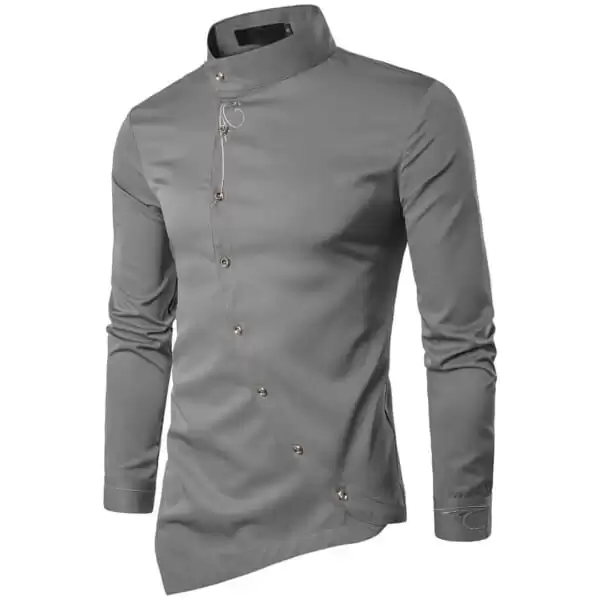
↓ 5 – Chut Thai Chakkri
Chut Thai Chakkri is one of the national dresses of Thai women. It is part of their formal wear. The outfit is weaved by a process called ‘yok’. A touch of golden or silver-coloured threads is commonly observed in Chut Thai Chakkri. This makes the costume more expensive and formal. The chut thai chakra is finished with a long skirt that is wrapped all around the waist and has two folds. In the Thai language, this skirt is called Sinh.
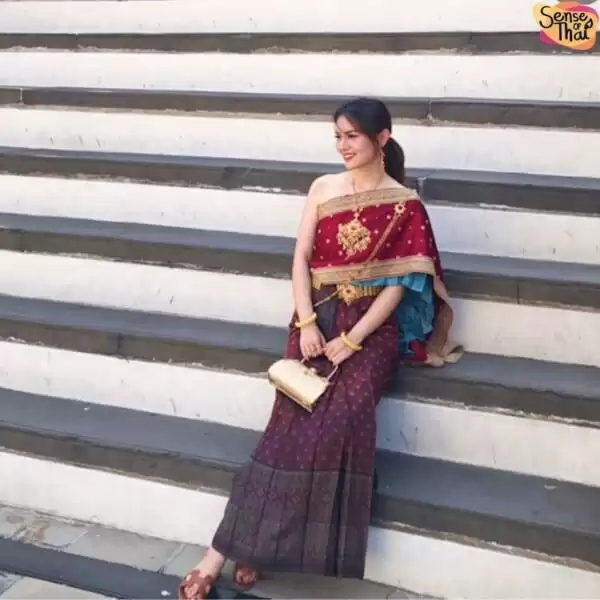
↓ 4 – Chut Thai Boromphiman
Chut Thai Boromphiman is a long-sleeved shirt for women. It comprises vertical buttoning on the front or the back of the shirt. This blouse is tucked beneath a sinh, which goes all the way down to your ankles. The skirt and the blouse are stitched together for convenience purposes. The blouse has a simple round neck, giving it an elegant look. Chut Thai Boromphiman is worn on semi-formal occasions such as the League Ceremony.
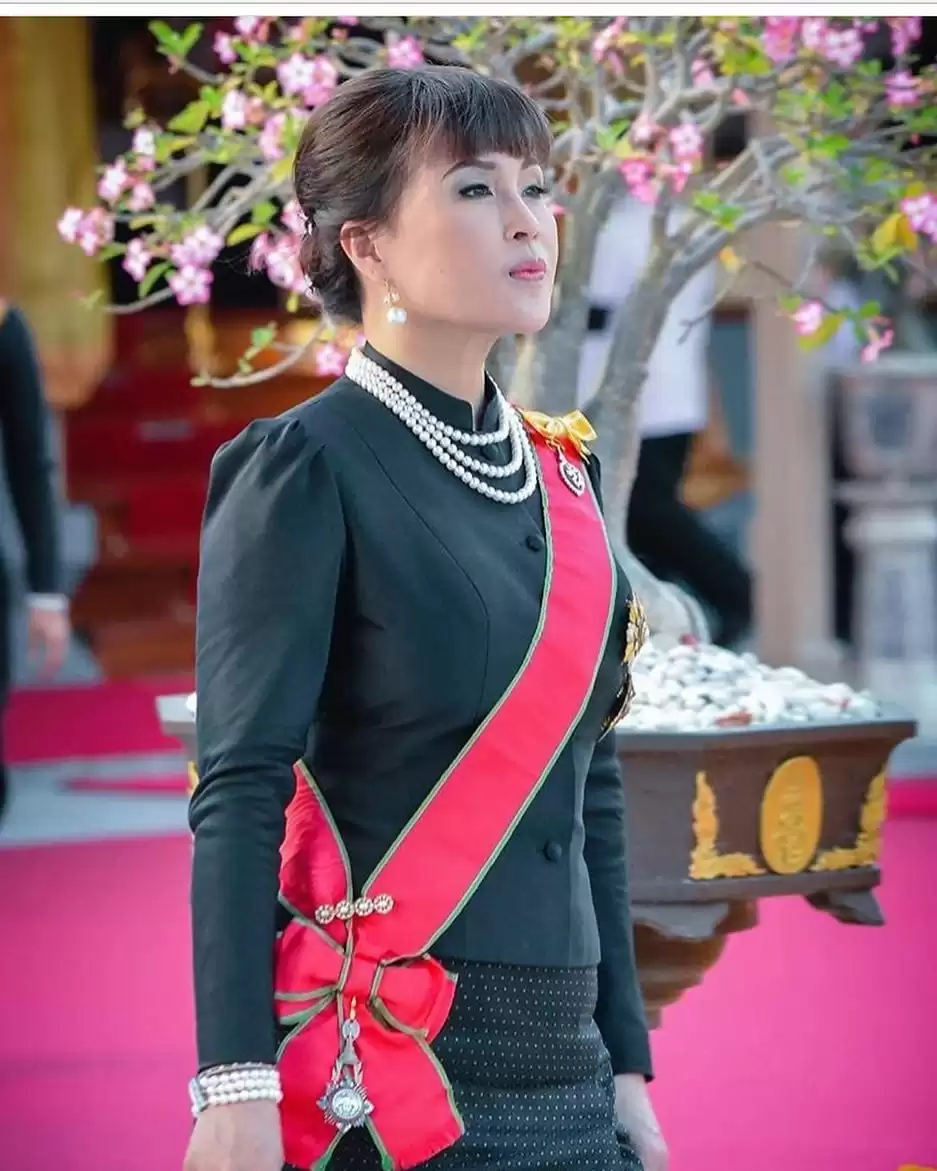
↓ 3 – Chut Thai Siwalai
Chut Thai Siwalai is similar to the previously discussed, Chut Thai Boromphiman. Thai women can be seen wearing Chut Thai Siwalai to formal events and ceremonies. The only difference between Chut Thai Siwalai and Chut Thai Boromphiman is that the former has an over-shoulder sbai (a shawl-like garment worn by Thai women to cover their chests). The vibrant colours and prints make it look pretty similar to the traditional African Kitenge outfits.
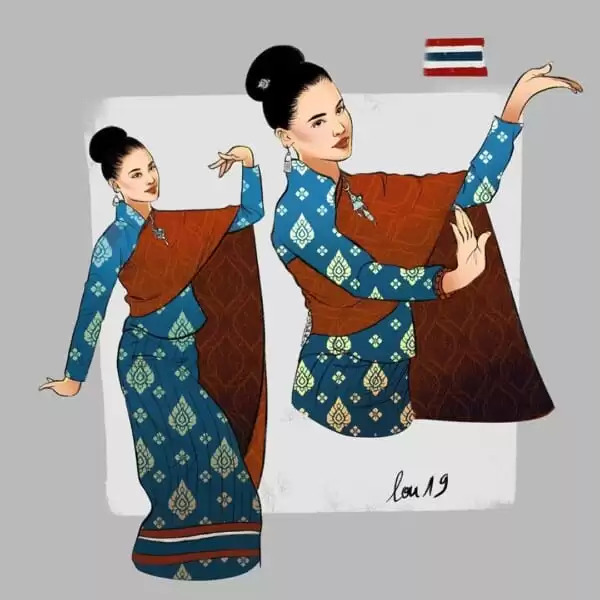
↓ 2 – Chut Thai Amarin
Chut Thai Amarin is comparatively more casual than other national outfits. It is categorized as evening attire. It consists of a brocade sinh and an informal blouse with sleeves that are elbow-long.
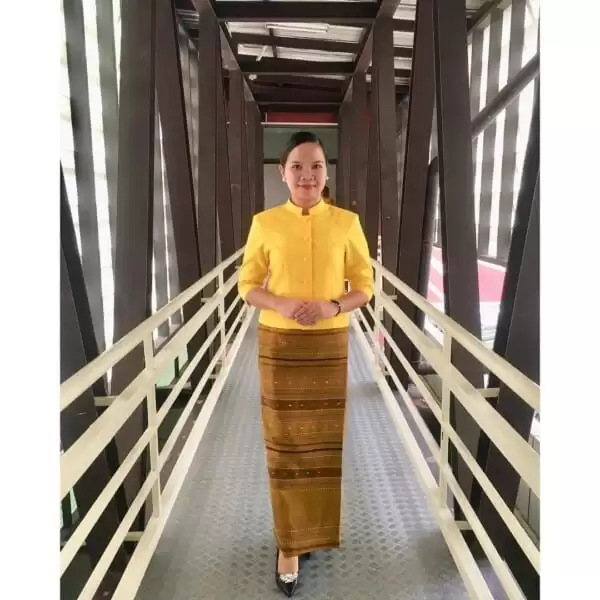
↓ 1 – Chut Thai Chitlada
This dress is worn to events taking place during the day. It has a brocaded band at the hem of the sinh. Char Thai Chitlada is worn with a silk blouse. The blouse had five ornamental buttons in the front, which were either silver or gold in color. It is not considered too formal and can be appropriate for occasions such as receiving royals at the airport etc.
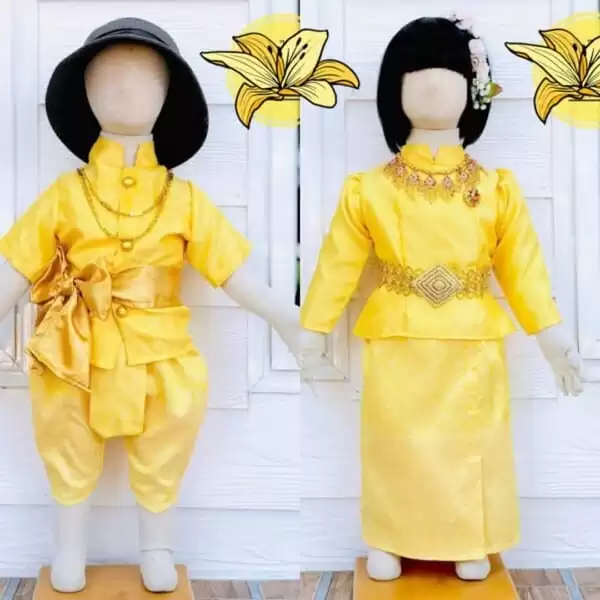






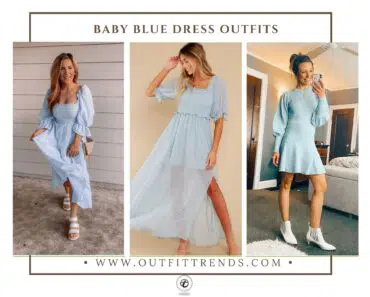


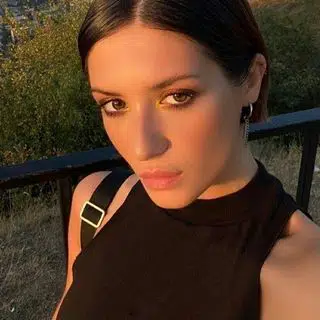
thank you so much. I really appreciate the time and work put into this article.
After watching Love Destiny I wanted to learn more about the clothes. There were many web sites but none explained the actual history and folding technique.
I have a couple cloths I bought to cut up for trim fabric but now I’ll have fun wrapping myself up like an Asian from times past.
Enjoyed reading. I am very interested in this culture as I was adopted as a baby and am learning about my history.
Thank you for your kind words.
Best regards,
Team Outfit Trends.